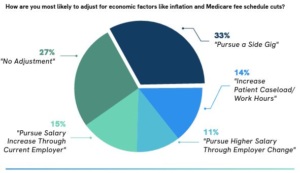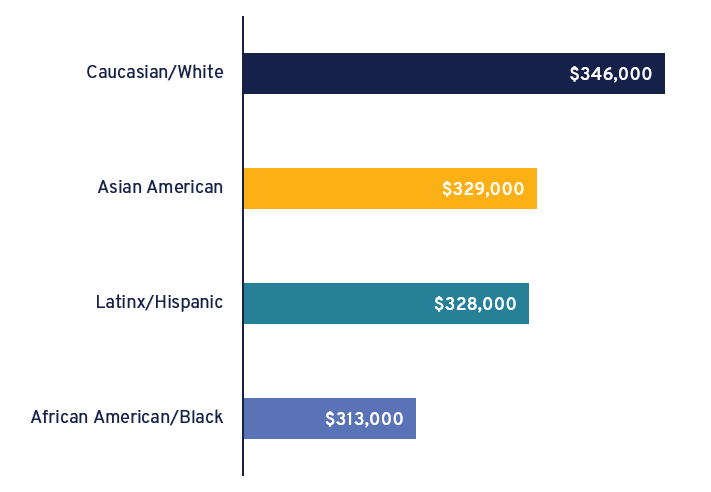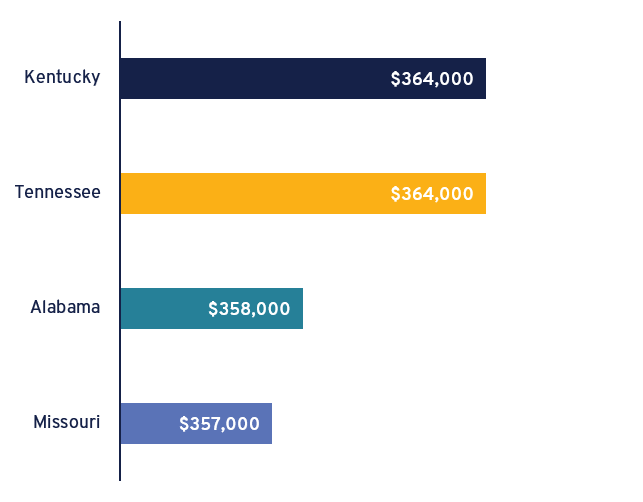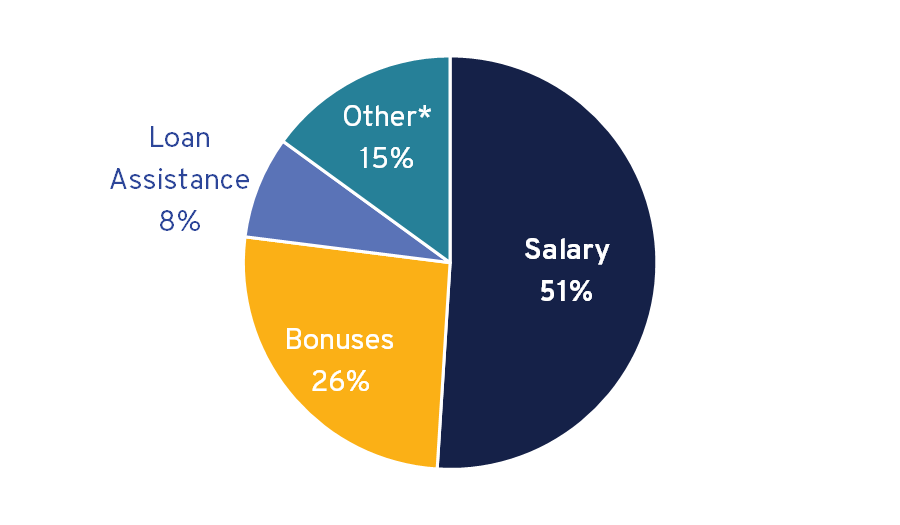As Healthcare Organizations Get Bigger, Healthcare Workers Feel Smaller
As healthcare organizations consolidate and get bigger, many healthcare workers are left feeling invisible and unseen.
– Sachin H. Jain, Contributor, Forbes Healthcare
While workload is often blamed for “burnout,” people didn’t become healthcare professionals by not working hard. Rather, it is the nature of the work and how they are treated by healthcare organizations. Dive deep and you’ll see that workers repeatedly point to their invisibility, lack of agency, and the ways in which their needs are ignored as the source of the problem.
One surgeon with whom I spoke said, “We are within an environment that is becoming carcinogenic. There are infinite demands on me with no relief in sight. We are constantly asked for more and no one cares that we have no more to give.”
In simple terms, the leaders of hospitals, health systems, and health plans should make their big (and growing) impersonal institutions feel small again, organizing them into intimate, smaller units where people feel ownership and empowerment.
They should stop referring to everyone who sees a patient generically as a “provider. They should push technologists and regulators to reduce the onerous burden of bureaucratic paperwork and instead maximize every opportunity for clinical workers to interact with patients. And they should ensure that clinicians at every level are key members of their organizations’ leadership teams, involved at every step in determining the future of their organizations.
Moreover, they should remember that the product that they are delivering to patients is, in fact, the people.
Read or listen to the full Forbes article here.
Feeling invisible? Learn how SCC can help by scheduling a complimentary 30 minute conversation today!
2023 Doximity Physician Compensation Report
U.S. healthcare workers face a number of pressures in their jobs today, including economic strains, a growing physician shortage, and high rates of work-related burnout. These challenges drive many medical professionals to reassess their careers, explore opportunities for greater autonomy and work-life balance, and in certain cases, even consider new career pursuits outside of medicine altogether.
Doximity’s report shows that the average pay for doctors did not increase in 2022. In fact, their study suggests a slight decline of 2.4%, compared to an increase of 3.8% in 2021. It is clear physician salaries did not keep pace with the high rate of inflation in 2022. As a result, many doctors experienced a decline in real income, as inflation ran rampant.
Impact of Economic Factors on Career Plans

The Gender Wage Gap
According to the newly released Doximity 2023 Physician Compensation Report, “the Physician Gender Pay Gap at 26% remains substantial, with women physicians earning nearly $110,000 less than men physicians, on average, even when salaries were controlled for specialty, location, and years of experience.
In 2020, an analysis of our physician compensation data from 2014-2019 estimated that over the course of a career, men physicians make over $2 million more than women physicians.” Combined with this new data, these results emphasize the continued importance of increasing gender pay transparency and equity in health care.
Source: 2023 Doximity Physician Compensation Report
Are you interested in reviewing your salary? SCC can help you determine a fair salary based on your unique location, skills, and specialty. Contact us to learn more.
Women’s Health Research Lacks Funding
Conditions that affect women more than men garner less funding. But boosting investment could reap big rewards.
In this study of more than 20,000 clinical trials in the United States between 2000 and 2020, women were under-represented in some trial types and over-represented in others.
The 2021 analysis “demonstrates that the funding of research for women is not aligned with burdens of disease,” says Sarah Temkin, Associate Director for Clinical Research at the NIH Office of Research of Women’s Health.
Why is this so important? “A separate study modeled how doubling US funding for women’s health could yield health and economic improvements over a 30-year period. In coronary artery disease, for example, more funding increased life expectancy and disease-free years for men and women – with the model assuming a larger benefit for women.”
2022 Medscape Physician Compensation Report
Medscape member physicians participated in this survey to report individual salaries. As such, this compensation survey provides insight into general trends in physician compensation.
MGMA and Sullivan Cotter are the largest compensation surveys in the nation. Medical practices use these data to create compensation packages. In order to negotiate your value, you need the fair market value data. Read further for insights from the 2022 Medscape Compensation Report.
Physician Salary Trends
Self employed physicians earned 20% more than employed physicians overall.
15% of physicians reported that they were not given an annual raise and 10% of physicians reported a reduction in hours.
57% of physicians have an incentive bonus in their compensation plan.
48% of physicians in general surgery do not feel fairly compensated.
34% of physicians in plastic surgery do not feel fairly compensated.
The Gender Wage Gap
Women earned 25% less than men in primary care.
The wage gap in primary care increased by 2% from 2012 to 2022.
The wage gap was even larger for physicians in specialties, with men earning 31% more than women.
The gender wage gap in specialists salaries has declined slightly over the years, from 37% in 2017 to 31% in 2022.
Physician Compensation by Racial and Ethnic Group

Top Earning States for All Physicians

Are you interested in reviewing your salary? We can help you determine fair salary based on your unique location, skills, and specialty. Contact us to learn more.
Source:
Medscape Physician Compensation Report 2022: Incomes Gain, Pay Gaps Remain
Surgeon Salary Review

Is your salary on par with similar surgeons in your area?
A surgeon’s salary is typically comprised of several compensation buckets. These buckets may include base compensation, bonuses based on productivity or value, or other metrics defined in your practice setting.
Evaluating all of these moving pieces can be confusing and cumbersome. To make the matter more complex, a surgeon’s salary differs by specialty, location, and experience.
Medical practices often use national data reported by MGMA or Sullivan Cotter to create compensation packages. Other compensation resources include Doximity, Medscape, and Merritt Hawkins. A quick search for compensation in your area and specialty will likely direct you to sites like salary.com or glassdoor.com
These sources can give you a general gauge for where your compensation stands, but unfortunately, they are unlikely to benefit you when it comes time to negotiate your salary.
That’s where the SCC Team comes in.
The best care deserves the best compensation. SCC simplifies complex compensation packages to help you to determine and negotiate the right salary, benefits, and cultural fit for you.
We have the data analytics and tools to help you successfully navigate your compensation.
We review all surgeon specialties, including but not limited to:
| Bariatric Surgeon | Pediatric Cardiovascular Surgeon | |
| Breast Surgeon | Pediatric Neurosurgery Surgeon | |
| Cardiovascular Surgeon | Pediatric Orthopedic Surgeon | |
| Colon and Rectal Surgeon | Pediatric Plastic and Reconstruction Surgeon | |
| Corneal and Refractive Surgeon | Pediatric Surgeon | |
| Endocrine Surgeon | Plastic and Reconstruction Surgeon | |
| Endovascular Surgeon | Plastic and Reconstruction-Hand Surgeon | |
| Foot and Ankle Surgeon | Spine Surgeon | |
| General Surgeon | Sports Medicine Surgeon | |
| Hand Surgeon | Thoracic Surgeon | |
| Hip and Joint Surgeon | Transplant Surgeon | |
| Mohs Surgeon | Transplant-Heart Surgeon | |
| Neurological Surgeon | Transplant-Heart/Lung Surgeon | |
| Oculoplastic and Reconstructive | Transplant-Kidney Surgeon | |
| Oncology Surgeon | Transplant-Liver Surgeon | |
| Ophthalmology Surgeon | Trauma Surgeon | |
| Oral Surgeon | Trauma-Burn Surgeon | |
| Orthopedic Surgeon | Vascular Surgeon | |
| Orthopedic Trauma Surgeon | Podiatry Surgeon | |
| Pathology Surgeon | Shoulder/Elbow Surgeon |
We review locations by the following regions and states:
| Eastern | Southern | Midwest | Western |
| Connecticut | Alabama | Illinois | Alaska |
| Delaware | Arkansas | Indiana | Arizona |
| Maine | Florida | Iowa | California |
| Maryland | Georgia | Michigan | Colorado |
| Massachusetts | Kansas | Minnesota | Hawaii |
| New Hampshire | Kentucky | Nebraska | Idaho |
| New Jersey | Louisiana | North Dakota | Montana |
| New York | Mississippi | Ohio | Nevada |
| North Carolina | Missouri | South Dakota | New Mexico |
| Pennsylvania | Oklahoma | Wisconsin | Oregon |
| Rhode Island | South Carolina | Utah | |
| Vermont | Tennessee | Washington | |
| Virginia | Texas | ||
| West Virginia |
Schedule your free consultation here.
Merritt Hawkins’ 2021 Review of Physician and Advanced Practitioner Recruiting Incentives
The Merritt Hawkins’ 2021 Review addresses several important factors such as salaries, bonuses, and other incentives used to recruit physicians, physician assistants, nurse practitioners and CRNAs. This resource focuses on physician compensation trends, physician burnout, and physician shortages within the Review.
Other topics within the Review include:
- Physician compensation trends
- Recruiting engagement
- Trends in physician demand by practice setting and specialty
- Physician burnout
Physician Compensation Trends
Several specialty salaries were reported in the 2021 Review. Surgical specialties within this study include oral maxillofacial surgery and orthopedic surgery.
|
LOW |
AVERAGE |
HIGH |
|
|
Oral Maxillofacial Surgery |
$275,000 | $349,000 | $1,200,000 |
| Orthopedic Surgery | $300,000 | $546,000 |
$1,000,000 |
The review also assessed physician compensation and contract structures. Topics under this purview included:
- Base salary
- Productivity bonus structures
- Quality incentives
- Signing bonuses
- Relocation allowance
- Medical education loan repayment
Currently, the RVU remains the primary way employers measure physician volume-based productivity. Accordingly, RVUs were featured in 57% of physician employment contracts offering a salary and production bonus within the Review.
The majority of searches in this study offered a relocation expense allowance. However, fewer searches offered relocation allowance when compared to the previous year. In the 2019/2020 period 97% of medical practices offered relocation allowance to physicians, in contrast to 74% in the 2020/2021 period. The amount of relocation allowance varied widely.
Amount of Relocation Allowance
| LOW | AVERAGE | HIGH | |
| 2020/21 | $2,000 | $10,634 | $75,000 |
| 2019/20 | $1,000 | $10,553 | $40,000 |
| 2018/19 | $2,000 | $10,393 | $30,000 |
| 2017/18 | $2,500 | $9,441 | $25,000 |
| 2016/17 | $2,500 | $10,072 | $44,000 |
| 2015/16 | $2,500 | $10,226 | $30,000 |
In addition, signing bonuses were offered by a majority (61%) of medical practices. Similarly, the amount of signing bonus offered varied with a low of $1,000 and a high of $240,000 in 2020/2021.
Amount of Signing Bonus Offered
| LOW | AVERAGE | HIGH | |
| 2020/21 | $1,000 | $29,656 | $240,000 |
| 2019/20 | $2,500 | $27,893 | $100,000 |
| 2018/19 | $3,000 | $32,692 | $225,000 |
| 2017/18 | $2,500 | $33,707 | $180,000 |
| 2016/17 | $2,500 | $32,636 | $275,000 |
| 2015/16 | $1,000 | $26,889 | $350,000 |
According to the Review, signing bonuses remain a common recruiting incentive among hospitals and medical groups, though they may not be part of incentive packages offered by academic medical centers, direct pay/concierge practices, urgent care centers, some FQHCs, Indian Health and other settings.
CME expense allowance and educational forgiveness are additional incentives used to recruit physicians. In this review, 94% of searches offered to pay continuing medical education (CME) while 21% of searches offered to pay for educational forgiveness.
Physician Burnout & Physician Shortage
Two major factor driving the physicians shortage are burnout and the number of physicians nearing retirement age. Close to 30% of active physicians are 60 or older in the United States.
Further, COVID-19 has exacerbated the physician shortage. In the 2020 Survey of America’s Physicians 11% of respondents indicated they switched jobs or moved into a non-clinical role as a result of COVID-19.
In this survey 38% of physicians indicated they would like to retire in the next year, including 21% of physicians 45 years old or younger.
These results are relevant to physician wellbeing as well as physician negotiation power. Physician burnout must be addressed by physicians and hospital practices to maintain well-being. Determining and reviewing your cultural fit before and after accepting a job is necessary to prevent burnout. Luckily, the growing shortage means physicians have greater leverage to negotiate duties and compensation.
Are you interested in reviewing your salary?
We can help you determine fair salary based on your unique locations, skills, and specialty.
Schedule a free consultation to learn more.
Source: Merritt Hawkins’ 2021 Review of Physician and Advanced Practitioner Recruiting Incentives
Compensation Trends for Starting Physicians
Practices attract starting physicians by creating an enticing compensation and benefits package. While money is not the only determining factor for physicians selecting a new job, it matters. Especially for physicians just exiting residency or fellowship who carry heavy student loan debt.
“In a sense, the practice’s compensation method reflects its culture.”
Compensation plans have changed over time. The gap between physician supply and demand is a leading factor for changing compensation tactics. Two reasons cited were the current and projected physician shortage and an increased number of physicians retiring early.
2021 Starting Physician Compensation

In addition to the main forms of compensation, “other” perks outside of the traditional monetary methods:
- More paid time off to improve work/life balance
- Changes to the structure for partner track
- Reinstatement of CME funds that were cut in 2020
MGMA’s Provider Placement Starting Salary data set includes benchmarks for:
- Guaranteed compensation
- Amount of CME paid
- Amount of signing bonus
- Amount paid to relocate
- CME weeks paid time off
Compensation plans for physicians are always evolving.
Learn more. Earn more. Contact us today.
Source: MGMA, Most practices raising starting physician salaries rather than boosting bonuses, loan assistance
